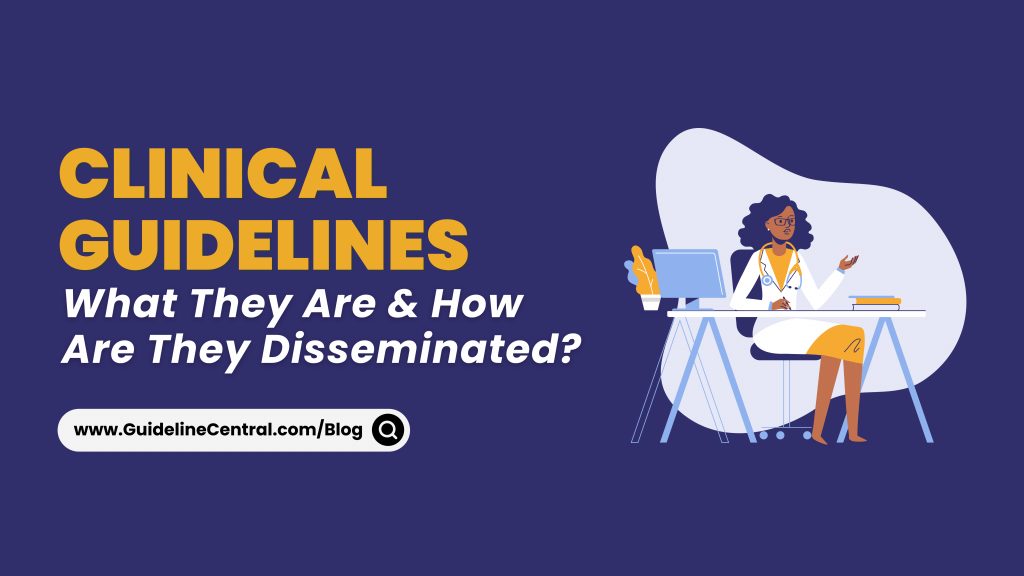Clinical Guidelines Explained

Clinical Guidelines: What are they & how are they disseminated?
Clinical practices that are based on graded research findings are more reliable than that based on an “expert opinion”. So, more focus should be directed toward identifying and understanding these graded research findings called guidelines.
Guidelines, also called clinical practice guidelines (CPG), are documents containing recommendations summarizing the best available evidence to help clinicians determine the best clinical decisions in critical moments – at point-of-care.
They also help educate other healthcare providers, patients, and policymakers to optimize and standardize a better healthcare.

Guidelines are developed by government organizations like the World Health Organization (WHO), the Food and Drug Administration (FDA), or the National Institute for Health and Care Excellence (UK) (NICE), or developed by institutions and/or specialty scientific societies like the American Society of Clinical Oncology (ASCO) or the American Gastroenterological Association (AGA) and many others. These guidelines are usually found in scientific journals or published on those organizations’ websites.
Guidelines are developed by a panel of diverse groups including clinical experts, epidemiologists, Public Health experts, and economists.
The panel does a thorough literature search for the available evidence, ideally systematic reviews, and votes on a set of recommendations that are graded based on strength and level of evidence while taking into consideration the patient’s values and preferences. Published guidelines are updated frequently whenever new evidence is available.

Now, you may have many questions such as why guidelines are more informative than individual scientific papers? Where to find the guidelines I am looking for? How to understand them? Which parts of the guidelines are the most relevant to me and my patients? If I found many guidelines related to my question, which guideline shall I use? How to know if this guideline is credible or not? We will answer all these questions and more in a series of upcoming blogs. Make sure to follow us on our social channels to get them as soon as they are published.
The answers to these questions are particularly important these days as there is a dramatic increase in the number of published guidelines. This increase may cause significant variation in the guideline’s recommendations. As a result, the presence of these conflicting guideline recommendations from different groups has become much more common, leaving healthcare professionals scratching their heads when trying to choose between them. Not to mention that some guidelines are so lengthy with supplemental materials and some guidelines are hard to interpret.
Dr. Heba Hussein, PHD
Clinical Content Coordinator at Guideline Central
Member, Guidelines International Network (GIN), Research Volunteer, University of Illinois at Chicago (UIC), and Assistant Professor, Faculty of Dentistry, Cairo University.
Copyright © 2022 Guideline Central, All Rights Reserved.